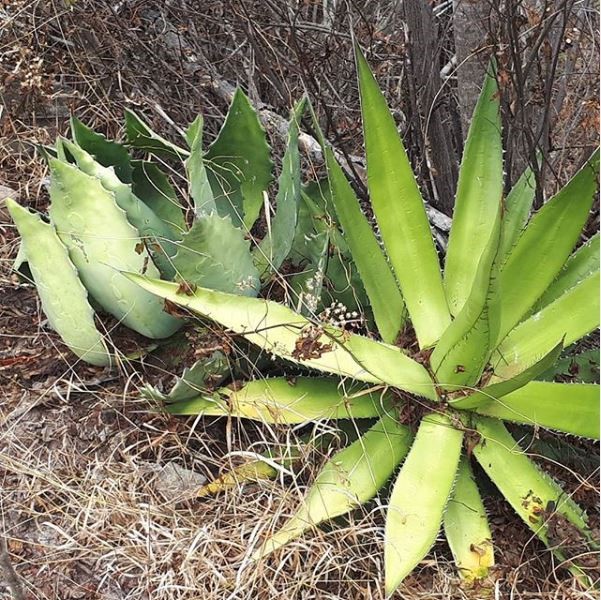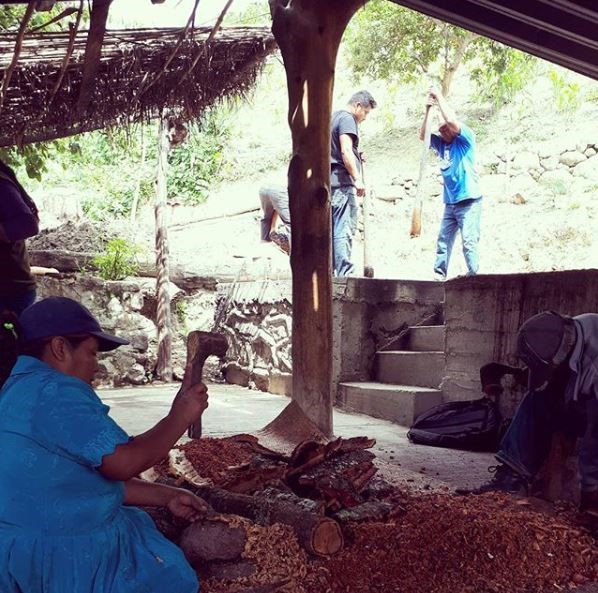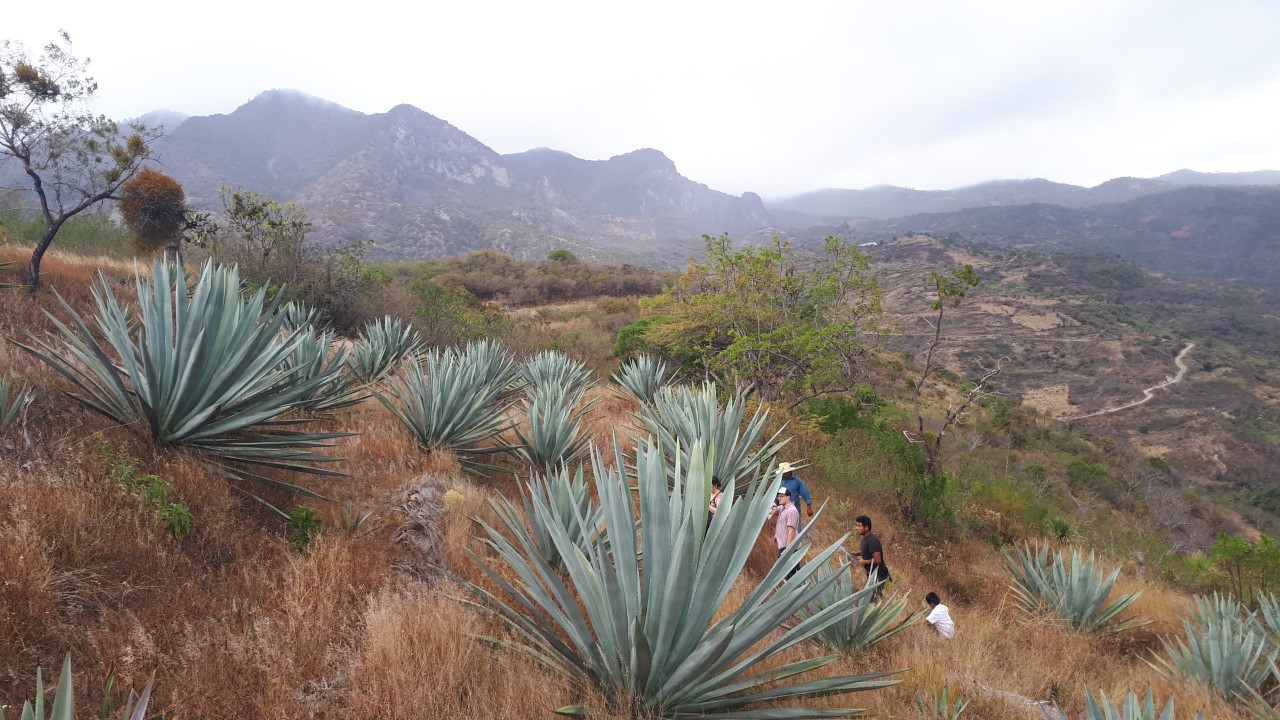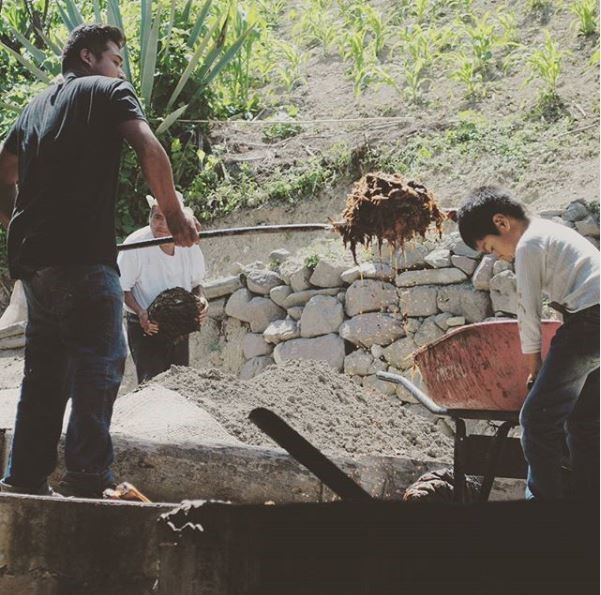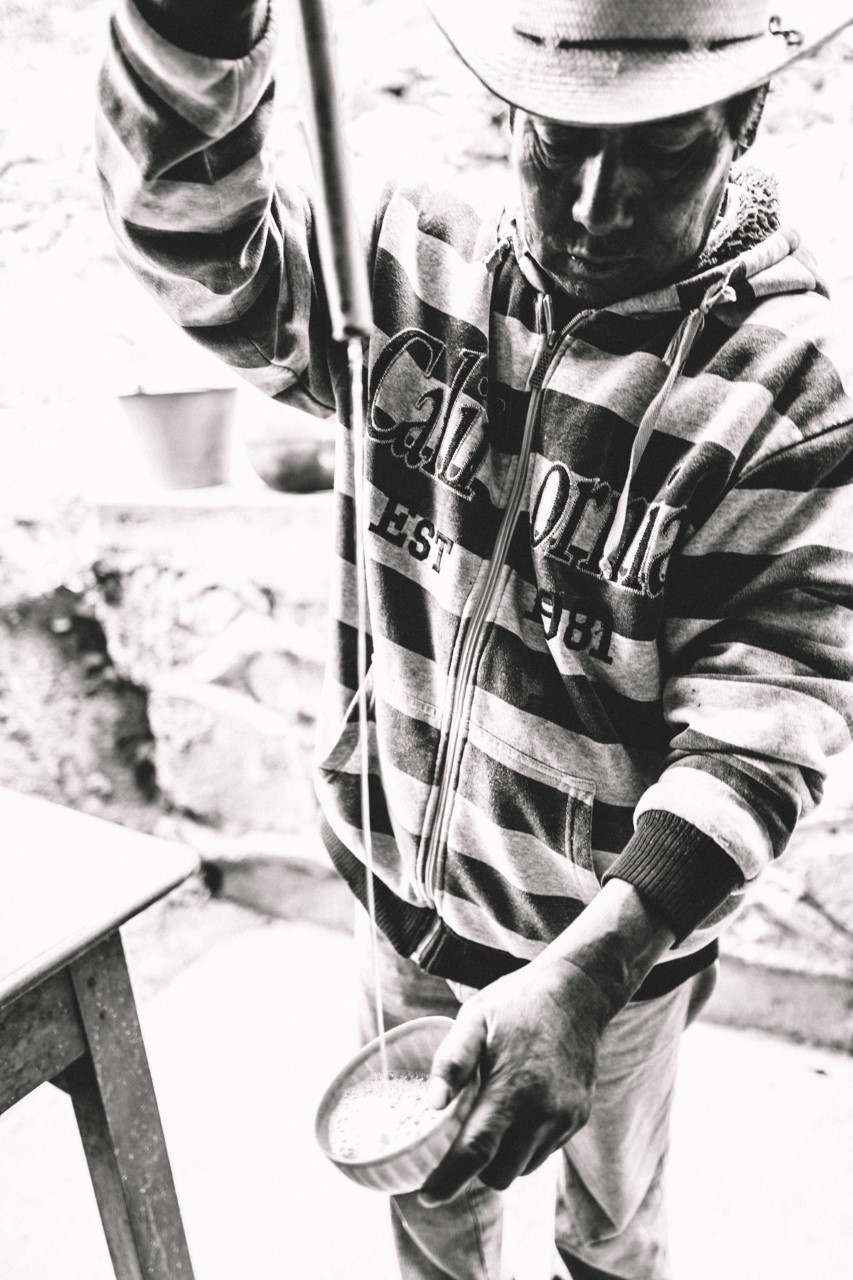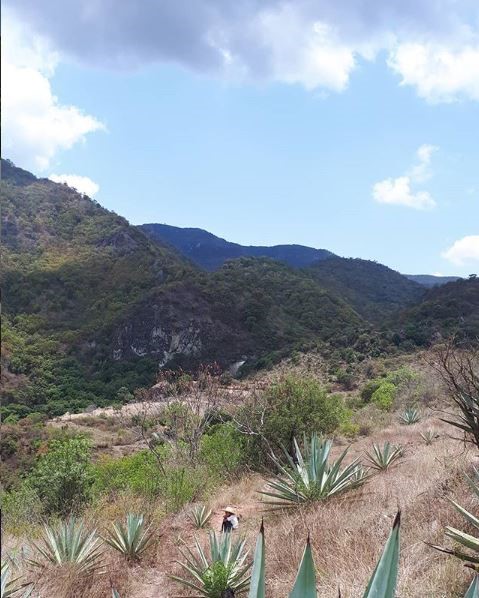What’s in a Name?
We’re entering somewhat of a renaissance for agave products. As mezcal continues to wow us with its small batches, traditional techniques, and somewhat of a back-country mystique, more producers seem to be circumventing the certification process. This, in part, is where we’re seeing the emergence of bottlings labeled, “Agave Spirits.” This is a catch-all phrase for agave products not made in one of the nine denomination of origins for Mezcal, five for Tequila, one (coming soon, hopefully) for Raicilla, and one for Bacanora. A producer also needs to get their product certified by the regulating body for that category to be able to put that classification on the bottle. In other words, if it’s produced outside one of the d.o.’s or if it’s not officially certified by the CRM or CRT, it must be stamped with Agave Spirits or Spirits Distilled from Agave (doesn’t quite have the same ring to it). Regardless, these are the same mezcals and tequilas, just without the official title.
Adding the acacia leaves before covering in burlap for the roast
Cinco Sentidos is working with a variety of different producers in Oaxaca and Puebla, which are both states certified in the d.o. for mezcal, however, they are not going through the CRM for certification. What they’re bottling is in actuality mezcal but you won’t find that on the label. While the CRM and CRT do provide valuable services and verifications for producers, they also charge a fee and the certification process can be a lengthy one, delaying sales and income for producers. Typically, this is an important process for new brands wanting to enter the market as it gives them the, “Stamp of Approval,” meaning it has been tested in a lab and has been deemed safe to drink. But most anyone who has taken a mezcal tour in Mexico will tell you that there’s a bit of romance in finding those small production mezcals sold in recycled water bottles.
El Destilado is the spiritual birthplace of Cinco Sentidos. Jason Cox founded the farm to table/glass style restaurant along with his friend and business partner, Joseph Gilbert (Formally of Saison in San Francisco), sourcing seasonal ingredients and highlighting the traditional Oaxacan flavors and dishes with a modern interpretation. To mirror that concept in their beverage program, they scoured the area to find producers who could distill high quality agave spirits. Jason found five mezcaleros who began making mezcal exclusively for El Destilado; the batches were so small, it didn’t seem worth it to go through the certification process. As the popularity of the restaurant grew, so did word of the phenomenal mezcals they were serving.
I was fortunate enough to connect with Jason and ask him a few questions about the brand, as well as the producers he works with and the products he imports. I want to take this opportunity to thank him for taking the time to thoughtfully and graciously answer all my questions in detail to relay to you, our readers.
Interview with Jason Cox
Part I: Production Questions
JL: It was relayed to me that you are particular about and strategic with the agaves you use. How do you choose which agaves you want to harvest?
Tobala(L) and Jabali(R) growing in the wild side by side
JC: Alberto works with four agaves: Espadin, Sierra Negra, Jabali, and Tobala. All of the agave he uses in his production are harvested locally in the Sierra Norte region. The cultivated agaves (Espadin and Sierra Negra) he harvests are almost always from land he owns or, in some cases, leases (in order to harvest ripe agaves). The wild agaves (Jabali and Tobala) are harvested from communal lands in Santa Catarina Albarradas. His son-in-law Reynaldo is particularly proud of his willingness and ability to hike deep into the mountains for harvest Tobala and Jabali; he has a rather incredible mental encyclopedia about where wild agave is growing and when it is ripe. Alberto and Rey are both very selective about harvesting only mature agave; and in the case of Jabali and Tobala it would be practically pointless to harvest under-ripe agave as the yield-per-piña is significantly lower.
JL: How do you forage for agave and how do you transport the piñas from the mountains to the Palenque?
JC: Mostly, Reynaldo is the forager for agave as Alberto is getting a little long in the tooth; occasionally a family member will accompany him to harvest. The piñas are transported from the hills to the nearest road by donkey, and from there pick-up truck to the palenque.
JL: What is the idea behind including banana and acacia leaves in your cook?
JC: Alberto tries to avoid the use of plastic and other synthetics as much as possible. Rather than use a tarp, the banana and acacia leaves are both organic alternatives to a tarp. They are used in the roast depending on their seasonality. I have attached a photo of a recent Sierra Negra roast in which the piñas were covered with acacia leaves.
JL: How do you decide on the ratio of Jabali to Tobala to use? Are you trying to achieve certain flavors?
JC: This ratio is actually dictated more on availability of ripe plants than on flavor profile. However, the idea of making a Jabali-Tobala ensamble came to fruition a couple of years ago when Alberto was exploring ideas as how to control the notoriously foamy Jabali fermentations and distillations, and he has found that by including a significant amount of Tobala in the ferments that the foam is reduced.
JL: Can you explain the reasoning behind putting Encino de agua tree bark in the fermentation tanks?
Future Mezcalero sitting amonst Sierra Negras
JC: Alberto will use two types of tree bark when fermenting, depending on the type of agave he is fermenting. “Tepehuaje” bark is used for Espadin and Sierra Negra, whereas “encino de agua” is used for Jabali, Tobala, and the Jabali-Tobala Ensamble. In both cases, these tree barks contain an enzyme that is rich in nitrogen - basically, food for yeasts. Santa Catarina Albarradas is higher altitude than practically any other mezcal-producing town in Oaxaca, and the diurnal shift is significant. Hot days and cold nights that can reach as low as 40 degrees Fahrenheit in winter months - overall, significant temperature shifts that are not the most conducive to the spontaneous fermentation of ambient yeasts. Using these tree barks is Alberto’s (and producers in the Sierra Norte region in general) “accelerant,” a totally local and organic alternative to using a yeast inoculate, synthetic starter, or a “foot” from previous ferments (Alberto cleans the fermentation tanks thoroughly between ferments - he is a stickler for cleanliness and order). As for the taste, both types of bark are astringent and tannic, but the encino de agua is much more powerful. The distinction between the two barks is how potent they are - Alberto will use the less potent encino de agua with the low sugar agaves Jabali and Tobala as they require less yeast to complete their fermentation.
Without a doubt, the flavor of the barks makes an impression on the final product (Alberto does not remove the bark from the mash before distilling, a technique that would actually prohibit his mezcales from being certified by the CRM). However, I have never had a “non-barked” batch, as Alberto is a firm believer that the bark is absolutely necessary to make the mezcal.
JL: Do you find the Jabali easier to work with when combining it with Tobala or any other varietal of agave?
JC: Yes, but he has yet to try combining it with any gave apart from Tobala.
JL: How long did it take to hand crush all of the piñas for this batch?
JC: Two five-hour workdays with 4 people alternating at the mashing pit. While the men crush, the women in the family strip the bark from the encino de agua with small wooden hammers.
Part II: Cinco Sentidos Questions
JL: What inspired you to open a mezcaleria and how did that evolve into El Destilado? How did you find your chef?
Alberto Martinez checking the abv by the pearling of the spirit
When I moved to Oaxaca (just over four years ago now), I started working at a mezcaleria so I could amplify my own knowledge about mezcal. It didn’t take long to discover that while a lot of people came to Oaxaca to learn about mezcal, not a lot of establishments had well-trained staff that could share knowledge with inquisitive travelers (although I feel that has changed quite a bit now a days). I ended up doing a lot of my own training - visiting producers on my account, asking questions, reading all the existing literature about mezcal in both Spanish and English, even watching producer-made YouTube videos. At that time my friend and now business partner, Joseph Gilbert was working at a restaurant called Origen in Oaxaca for the same reasons I was working at a mezcaleria - to learn more about Oaxacan food, culture and origins. A few mezcal sessions and all of a sudden we decided we ought to open our own spot - I would be in charge of the mezcal program, and he the kitchen.
JL: How did you find and partner with your five different producers?
JC: We actually currently work with 11 producers for our Mexico bottlings, and will soon be sending new expressions from four of them to the U.S. in the next few months. Most of them I met just by driving into towns I had read about and asking around for mezcal.
JL: How much are the, "mezcaleros" compensated for each bottle they produce?
Walking amongst giants
JC: This is a different arrangement for every producer that has a lot of factors, including agave species, production style (as some stills are much less efficient than others), yield-per-harvest, whether or not the brand subsidizes the purchase of agave, etc., etc. We do not have production contracts in place for any producer (I have found that those are basically only enforceable from the buyer’s standpoint and not from the producer’s standpoint and the last thing we want is a producer making mezcal for us under the threat of breach of contract). Having no contracts in place inherently pushes us to always be paying significantly higher than the market rate. Apart from that, we have a 10% profit-sharing model that I have put into place. Those funds are generally dedicated to support and infrastructure projects which include the purchase of land for producers (put in their name), the installation of water collection and irrigation systems, palenque improvements such as roofing over the oven and mashing pit, purchase of agave and trees for transplant to producer-owned land, maintenance of an agave nursery that producers can germinate their own seeds at, but those funds also can be used for personal needs (health expenses, legal expenses) as well.
JL: Do all of your producers grow/harvest their own agave or do some source from other fields/regions?
Three generations working for one batch
JC: Alberto, Marcelo and Amando source all of their agave from their respective regions. Tio Pedro buys most of his agave from surrounding towns, and Atenogenes both grows his own and purchases from other regions when the opportunity presents itself.
JL: I understand that Cinco Sentidos donates to charities on occasion. Are there any other sustainability projects or infrastructure support that the brand is involved in?
JC: Yes, and in the upcoming future we will likely scale those charitable donations back and direct those funds to Cinco Sentidos producers. Our long-term goal is to ensure that all Cinco Sentidos producers have seedbeds in their homes and palenques, have ample fields to plant agave and other crops, and have the knowledge, tools and resources to both provide for their family in the future and also off-set the environmental impact the wild-harvesting of agave and the pressure on forests for firewood. We have made significant progress in a short period time, but we have a long way to go.
Tasting Notes
5 Sentidos Jabali/Tobala
A family affair- Alberto and his Son-in-Law mash while his wife Yolanda removes the Tepehuaje bark from a branch
Another phenomenal offering from 5 Sentidos! This blend of wild Jabali and Tobala varieties is super expressive, only available through K&L, and only 119 bottles produced in this batch. Pairing these two together makes for a wonderfully fruity, yet spicy and slightly vegetal, “agave spirit.” Jabali is notoriously hard to work with and Tobala has been regarded as “King of the Agaves,” and this blend does a magnificent job of highlighting these wild plants. The nose is loaded with sweet, fruity, high tones of kiwi and strawberries with a bit of almond paste as well. The palate is very smooth, with a silky texture and mirrors the notes above on the tongue. On the finish, more of the notes of the Jabali start to shine with a long, sweet roasted agave flavor, a little spice to balance, and cucumber. This is a definitely a bottle to grab before it’s gone.
Keep your eye out for continued K&L exclusives with Cinco Sentidos!
-Jackson Lee









